#Dodge Charger 440
Explore tagged Tumblr posts
Text

Back in 1973 Motor Trend ran a 6-car road test of performance cars at Ontario Motor Speedway. The goal was to find the highest top speed for an American 4-passenger car. The cars were as follows: Dodge Charger 440, Chevy Laguna 454, Ford Mustang 351, Buick GS Stage 1, AMC Javelin AMX 401, and the Trans Am SD-455. The AMX was the only car with a 4-speed.

Gear ratios ranged from 3.08 to 3.54 (the Trans Am was equipped with 3.42 gears). The winner was the Trans Am, clocking in at 124 mph, followed by the Dodge Charger at 121 mph, the Mustang and Laguna at 118 mph, and the Buick GS and AMC AMX at 115 mph. The Trans Am SD-455 was rated at 310 hp, but this was the pre-production version and all production models would be rated at 290 hp. Sports cars were not included.

The results chart is proof that stories of then-new cars going 140+ mph off the showroom were sometimes exaggerated. Wind resistance is one of the major factors in obtaining top speed, and 1973-era were not exactly aerodynamic marvels. - MCN
#Dodge Charger 440#dodge charger#dodge#charger#Chevy Laguna 454#Chevy Laguna#chevy#454#laguna#Ford Mustang 351#Ford Mustang#ford#mustang#Buick GS Stage 1#buick gs#buick#AMC Javelin AMX 401#AMC Javelin AMX#AMC Javelin#AMC#Javelin#Trans Am SD-455#trans am#pontiac#car#cars#muscle car#american muscle#mopar#moparperformance
49 notes
·
View notes
Text

Big block Dodge Challenger
11 notes
·
View notes
Text
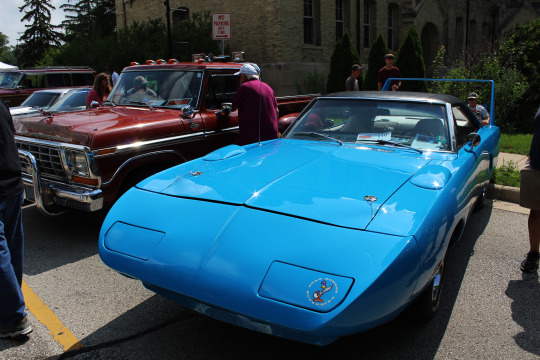


Plymouth Road Runner Superbird at Cruisn' The Grove (2023) in Elm Grove, WI.
#stance#stanced#plymouth#dodge#road runner#road runner superbird#superbird#charger#daytona#charger daytona#challenger#charger r/t#challenger r/t#charger rt#challenger rt#richard petty#426 hemi#440 super commando#440 hemi#v8#dodge charger#dodge challenger#dodge charger daytona#srt#mopar#srt hellcat#srt demon#hellcat#demon#viper
14 notes
·
View notes
Text

Die Cast Car of the day: 1971 Dodge Charger R/T 440 by M2 Machines #toy #toys #cars #diecastcars #dodge #dodgecharger #1971DodgeChargerrt440 #m2machines
2 notes
·
View notes
Text




1969 Dodge Charger. Piston Power Show 2017 Cleveland, OH. Photos by Richard Geul.
#dodge#dodge charger#mopar#440#magnum#muscle cars#richard geul#cleveland autorama#cleveland#ix center
1 note
·
View note
Text
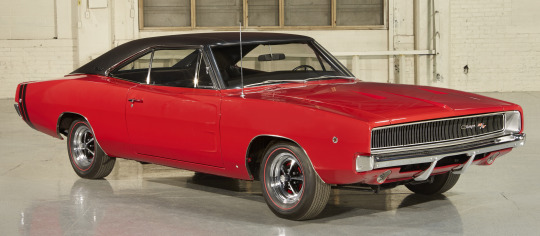
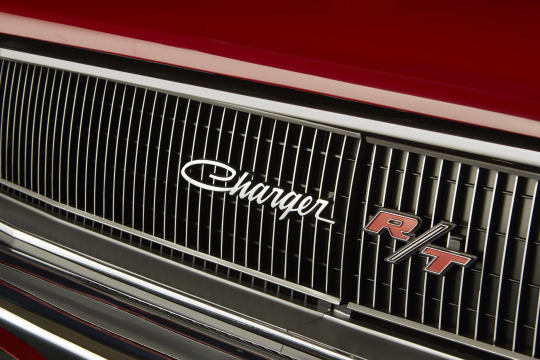
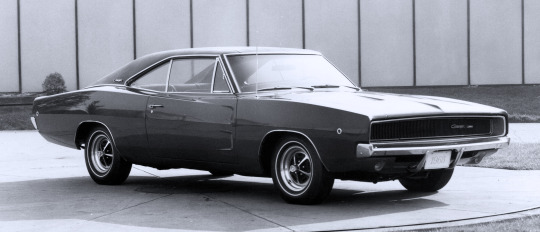


Dodge Charger R/T, 1968. The R/T (for Road/Track) was a new high-performance package to go with the new 2nd generation Charger fitted with the 440 "Magnum" V8. For 1968 initially 35,000 units were planned for production but demand was high and 96,100 Chargers were produced including 17,000 R/T models.
#Dodge#Dodge Charger#Dodge Charger R/T#1968#2nd generation#Magnum V8#440ci#muscle car#pillarless hardtop#fastback#1960s
635 notes
·
View notes
Text




1970 Dodge Charger 500 (replica?) with a 440 cu. in. 7.2L Magnum V8 outputting 375 HP. You're looking at 4-carb high-compression engine paired with a Tourqueflite transmission built as a limited-production NASCAR edition.
Ashland Car Show, September 2024.
Fujifilm X-T50 with XF 23mm f/2.0.
#Dodge Charger#Charger 500#1969 Dodge Charger#Classic Cars#Vintage Cars#Muscle Cars#Car Show#Dodge Muscle#Car Enthusiast#American Muscle#Auto Restoration#Car Collector#Classic Dodge#Mopar#High Performance Cars#Iconic Cars#Charger Lovers#Retro Cars#fujifilm#fujiflm x series#fujifilm xt50#photography#original photography#original photographers#yzshot#moparnation#moparperformance#moparclassic#detroit muscle#detroit
514 notes
·
View notes
Text

1967 Dodge Charger 440 Magnum
#dodge charger#challenger#dodge#dodge challenger#muscle car#classic car#cars#car#ford#ford mustang#car show#old cars#vintage cars#classic cars
513 notes
·
View notes
Text



1969 Dodge Charger R/T (440 Engine) and Blonde Girl (Drive Angry - Amber Heard)
43 notes
·
View notes
Text

1969 Dodge Charger 440 R/T
#car#cars#muscle car#american muscle#mopar#moparperformance#moparnation#moparworld#dodge#1969 dodge charger#Dodge Charger 440 R/T#Charger 440 R/T
420 notes
·
View notes
Text





I just need one of these. They are so me. Dodge Charger 1969 440 RT love it.
#love#beauty#sweden#beautiful#self love#guys with beards#me#dodge#charger#440rt#dodge charger#Dodge charger er
28 notes
·
View notes
Photo

1970 Dodge Charger R/T Triple Black w/Gator Grain Top 440 Auto[1558 x 957]
18 notes
·
View notes
Text

20 Fun and Fascinating Facts About Dirty Mary, Crazy Larry You May or May Not Know!
🚁 Vic Morrow’s Premonition: Vic Morrow insisted on a $1 million life insurance policy before filming helicopter scenes, citing a premonition of dying in a crash. Tragically, he was killed in a helicopter accident on set in 1982.
💥 Iconic Charger: The film features a 1969 Dodge Charger R/T with a 440 cubic inch V-8 engine. Its unique greenish-yellow color sparked a decades-long debate among fans over its true shade.
🚓 Destruction Derby: Six 1972 Dodge Polara police cars were purchased and destroyed during filming, all sacrificed for epic chase scenes.
🎥 High-Speed Filming: Filming began in 1973, capturing a mix of old and new highway markings due to a recent change in U.S. road signage standards.
📺 Tarantino Connection: A clip from Dirty Mary, Crazy Larry is featured in Quentin Tarantino’s Jackie Brown (1997), which starred Peter Fonda's daughter, Bridget Fonda.
🎞️ Tarantino’s Film Fest: Quentin Tarantino selected Dirty Mary, Crazy Larry for his first film festival in Austin, Texas, in 1996, celebrating its cult classic status.
🚗 Multiple Chargers: Three Dodge Chargers were used in the film, with the crew making meticulous efforts to match damage between them to maintain continuity.
🧠 Stunt Driver Legend: Famed stunt driver Carey Loftin, who worked on Vanishing Point (1971), contributed his expertise to this film, though he remained uncredited.
🚁 Helicopter’s Tragic History: The Bell 206B JetRanger helicopter used in the film had a long history in Hollywood but was involved in a fatal crash in 1984.
🎭 Roddy McDowall’s Favor: Roddy McDowall took a small role as a favor to director John Hough but requested that his name be kept off the credits.
🧑🤝🧑 Father-Daughter Connection: Peter Fonda (Larry) and Vic Morrow (Franklin) were the fathers of Bridget Fonda and Jennifer Jason Leigh, respectively, both of whom starred in Single White Female (1992).
🎸 On-Set Jam Sessions: Despite their on-screen bickering, Peter Fonda and Susan George got along well, often playing guitar and singing together between takes.
🎵 Rejected Musical Score: The film originally had a more upbeat score by Jimmie Haskell, which was scrapped in favor of a more mournful tone, except for one song used in the credits.
🏎️ Fonda’s Need for Speed: Peter Fonda did most of his own driving, frequently hitting speeds of 100 miles per hour during filming.
🔧 Car Consistency: Director John Hough shot the film in sequence, ensuring any damage to the cars was consistent throughout the movie.
🎭 Roddy McDowall’s Request: McDowall requested his name be kept off the credits for his small role, not wanting to overshadow other actors.
🚔 From Hill Street to Swapmeet: Robert Hirschfeld, credited as “Swapmeet customer #4,” is also known for his role as Officer Leo Schnitz on Hill Street Blues.
🎥 Local Talent: Many supporting roles were filled by Northern California-based actors, who also appeared in other films shot in the region like Dirty Harry and American Graffiti.
🍿 Tarantino’s Homage: Tarantino paid tribute to Dirty Mary, Crazy Larry in Jackie Brown (1997), featuring a clip from the film in one of its scenes.
🎶 Theme Song Lyrics: The film’s theme song, Time Is Such a Funny Thing, reflects the movie’s melancholic tone with lyrics pondering the fleeting nature of time.
Hashtags:
#MovieTrivia #ClassicMovies #CultFilms #CarChases #HollywoodHistory
6 notes
·
View notes
Text



Big Warehouse Opens Up To Reveal Secret Stash of Plymouth Superbirds, Ford Talladegas
In January 2023, we saw a massive collection of Dodge Charger Daytonas and Plymouth Superbirds cross the auction block. It included no fewer than 12 "winged warriors," and it raised no less than $6 million. It remains the largest collection of Mopar aero cars I've seen to date, but the stash you're about to see here is just as impressive. Uncovered by Ryan Brutt of "Auto Archaeology," this collection is nowhere near as fancy. As in most of the cars are awaiting restoration, and only a few are in Concours condition. But the warehouse keeping them safe from the elements is home to over 20 aero vehicles. And I'm not talking only about Dodge Daytonas and Plymouth Superbirds. The stash also includes Ford Talladegas and the Mercury Cyclone Spoiler IIs. It's probably the most extensive aero car collection in the US right now.
The footage begins with the car that led Dodge to develop the Daytona, the Charger 500. A green example awaiting restoration, it has a 440-cubic-inch (7.2-liter) V8 under the hood. It's sitting next to a blue 1969 Charger Daytona, also fitted with a 440, but the rest of the row comprises four 1970 Plymouth Superbirds.
There's an orange example that's running and driving and a B5 Blue car that was rescued from a barn. This one's having its nose rebuilt and packs a four-barrel version of the iconic 440 RB. Next up, there's a white Superbird with two desirable features: a Six Pack version of the 440 and a bench seat. The fourth Plymouth, also of the B5 Blue variety, is getting rebuilt as we speak.
The next row includes six Ford Talladegas. Based on the Fairlane Cobra Sportsroof, the Talladega arrived in 1969 to homologate the nameplate for NASCAR. The race car went on to win the 1969 season and prompted Dodge to design the radical Charger Daytona. About 750 road-legal cars were built, which makes the Talladega notably rarer than the Plymouth Superbird (1,935 units).
The six cars parked in this row need restoration, but they're still in one piece and retaining their V8 engines. One of the white examples was reportedly about to get crushed when it was rescued. Four more Talladegas are parked on the other side of the warehouse, including three examples in excellent condition and ready to be driven. In all, the collection includes ten examples: five in Wimbledon White, three in Presidential Blue, and two in Royal Maroon. Yes, the Talladega was offered in only three colors.
The Talladega wasn't the only NASCAR homologation special built by Ford Motor Company in 1969. Mercury also got a piece of the action and developed the Cyclone Spoiler II. A beefed-up, more aerodynamic version of the Cyclone, the Spoiler II project reportedly spawned 503 units. Unofficially, however, Mercury may have built only around 350 units. Regardless, this collection includes four examples, two of which are almost pristine.
Unlike the Talladega, which was equipped with the 428-cubic-inch (7.0-liter) Cobra Jet V8, the Cyclone Spoiler II left the factory with the smaller and milder 351-cubic-inch (5.8-liter) Windsor V8. Unfortunately, there's no info on how many cars from this collection are still equipped with their numbers-matching mills.
Always though that these were kind of dumb cars to own, and they could barely get rid of them when they were new, some hanging around dealerships for years, now my car collecting and wrenching days are coming to an end, sort of developed a warm spot
2 notes
·
View notes
Photo
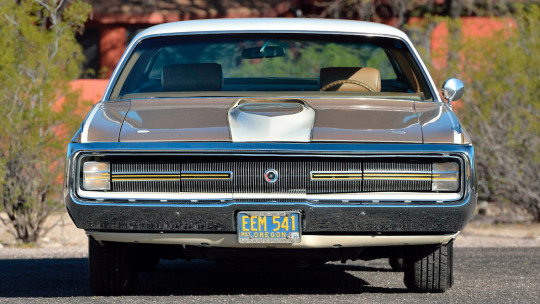

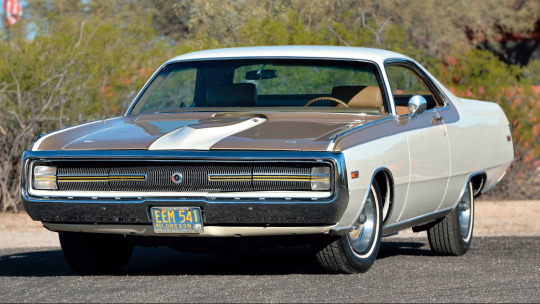

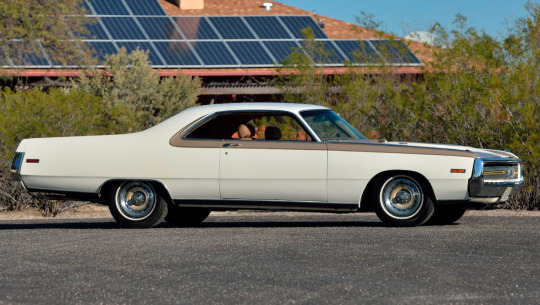


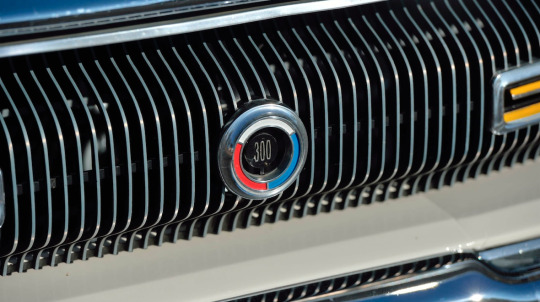


Chrysler 300H
The 1970 Chrysler 300 Hurst is a limited-edition unicorn that offers performance, luxury, size, and exclusivity. With a length of over 18 feet, it earns a place in history as one of the longest luxury performance coupes of all time. Chrysler 300 Hurst’s origin is shrouded in mystery. The car was assembled at Chrysler’s Jefferson Avenue plant in Detroit, Mich. It was shipped 600 miles east to Warminster, Penn. for completion.Hurst bolted on a distinctive satin tan fiberglass-skinned hood with 300H emblems and a fiberglass trunk lid with an integrated spoiler. There’s no mistaking a 300H on the street because the car was only available in Spinnaker White, with orange and brown tape stripes embellishing the flanks. Oddly, the cars were not equipped with Hurst shifters.Safe to say, there’s nothing like the 300 Hurst’s magnificent interior in the muscle car world. The designers swiped the gorgeous overstuffed tan leather seating from the Imperial. It’s as if someone stuffed a living room sofa into a Charger.
Every 300 Hurst edition left the factory with Mopar’s well-proven 440 cubic-inch V-8 and a heavy-duty TorqueFlite 727 three-speed automatic transmission. The air-cleaner housing proudly carried a TNT designation.
With a four-barrel carburetor, the TNT 440 engine had a 375-horsepower rating with 480 pound-feet of torque. The 300H’s V-8 wedge is identical to Plymouth’s Super Commando 440 and Dodge’s 440 Magnum. Slap on a decal and boom: It’s a TNT.
With the standard 3.23 gears out back, the 300 Hurst delivered 0-60 MPH times in 7.1 seconds and a quarter-mile time of 15.3 seconds. Its speed with more aggressive gearing and stickier tires is anyone’s guess.
44 notes
·
View notes
